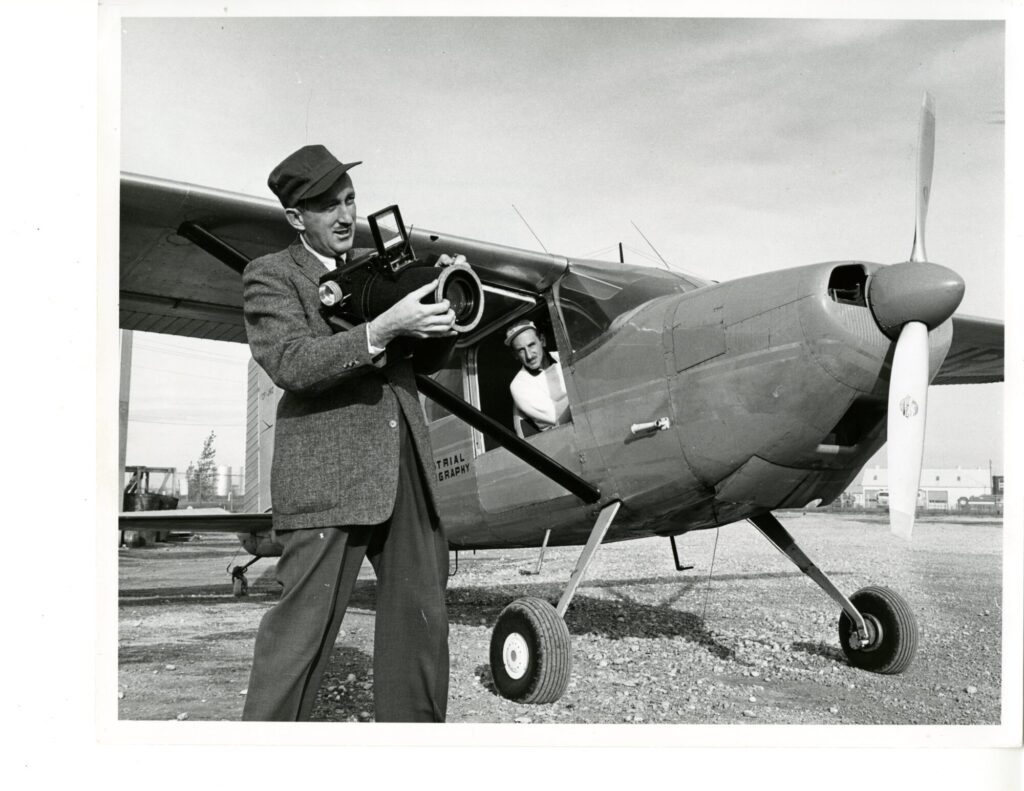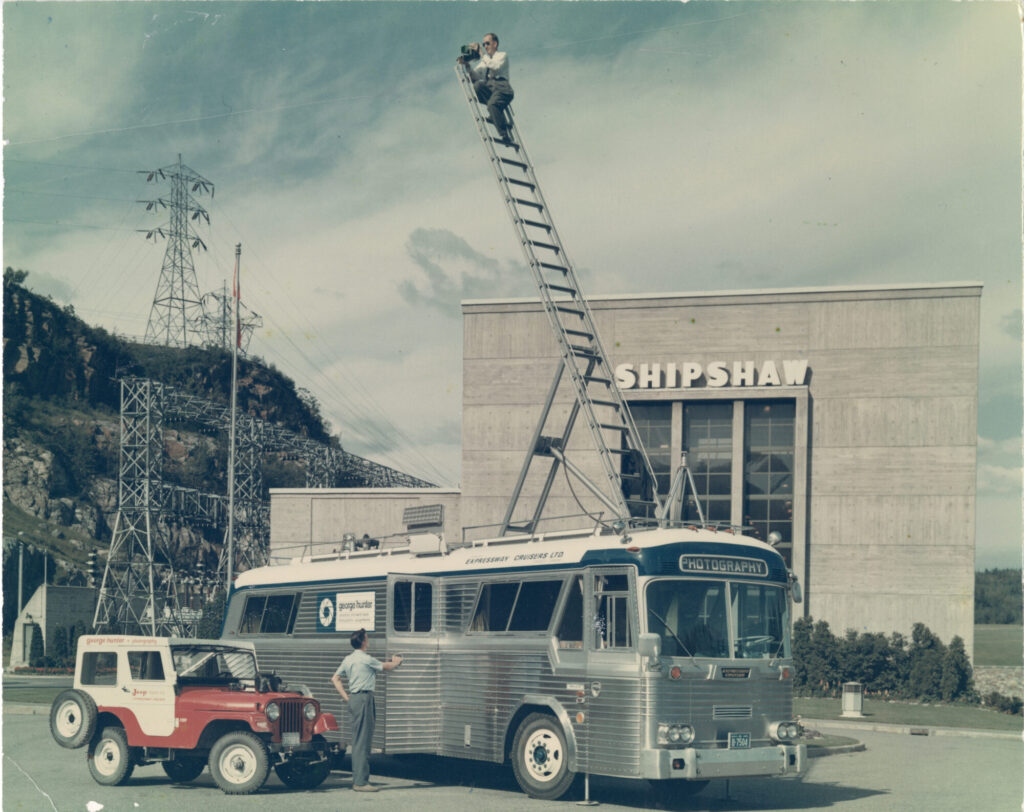George Hunter had an eye for showing us the country.
One of Canada’s most prolific documentary photographers, Hunter’s seven-decade career gave us some of Canada’s most iconic industrial and natural landscapes, celebrating his love of country through his camera lens.
Hunter was born in 1921 in Regina, Saskatchewan and got his start in newspapers, covering the home front during World War II. He worked as a stills photographer for the National Film Board, which allowed him to travel the country.
However Hunter wasn’t content to just shoot from the ground – he sought to elevate Canadians’ understanding of our familiar landscapes by granting us a different perspective.
A licensed pilot, Hunter pioneered the use of aerial photography. As a licensed airplane pilot, Hunter captured breathtaking views of Canada’s north, the Prairies and our coastal regions.
His Mississauga studio was like walking through a contemporary history of Canada. There are his shots from the 1940s of Inuit in Canada, photos of miners with their challenging stares, and the work-worn hands of fishers hauling in their commercial nets.
He was on site days before Nova Scotia’s Westray Mine exploded, and somewhere over Edmonton he almost fell out of his plane. An adventurer ready for his close-up.
And it wasn’t just Canada that caught Hunter’s eye.

The young George Hunter was one of the first photographers in the world to perfect aerial photography. Here he is with his camera and his pilot and plane ready to capture his signature bird’s eye view. (Photo courtesy of Museums of Mississauga)
He visited over 135 countries, and managed to talk his way onto the last plane out of Afghanistan as the country sat on the brink of the Soviet invasion.
In the mid-1950s, his groundbreaking work was featured in Time magazine in a 12-page spread entitled ‘The US After Dark’ which featured images of America’s urban centres gleaming against a dark landscape.
He was one of the first photographers to be inducted into the Royal Canadian Academy of Arts and his images can be found in dozens of permanent collections at public galleries across Canada.
More than one hundred of his photographs are part of the Canadian Museum of Contemporary Photography. This vast collection is a testament to his ability to document the changing face of Canada through its people, industries, and landscapes.
In 2017, the National Film Board of Canada and Firefly Books published “George Hunter’s Canada: Iconic Images from Canada’s Most Prolific Photographer.” This book showcases a selection of Hunter’s work, celebrating his contribution to Canadian photography and ensuring that his legacy continues to inspire future generations.
And then there’s Hunter’s work with the Canadian Mint. If you are old enough to remember paying for things with real cash in the 70s and 80s, you once carried a George Hunter image in your wallet.
Two of his photographs graced the Canadian five and ten-dollar bills.
The $10 bill from the Scenes of Canada series of the 1970s and 1980s features an engraving of the Polymer Corporation plant in Sarnia, Ontario.
The decision to use an industrial scene was unusual, as Canada typically highlighted its natural resources and landscapes on its currency.
The Polymer Corporation plant in Sarnia, ON played a crucial role during World War II. After Japan’s attack on Pearl Harbor, Canada faced a significant challenge: securing a reliable supply of rubber for the Allied war effort. The creation of the Polymer Corporation was a bold and risky move authorized by Canada’s Minister of Munitions and Supply, C. D. Howe.
Hunter’s photograph is more than just an industrial scene; it represents a pivotal moment in Canadian history. The intricate details of the plant provided an ideal subject for engraving, making it a challenging yet rewarding choice for the $10 bill.

Photographer George Hunter travelled with a custom-designed bus to enable him to capture photos from far above street level. (Photo courtesy of Museums of Mississauga)
From the heartland to the coast, Hunter’s $5 bill image featured a salmon seiner at work, taken at Ripple Point on the Johnstone Strait off the coast of British Columbia.
The BCP45 had an all-Indigenous crew at the time, including Allen (Ollie) Chickite from the We Wai Kai Nation. Hunter’s photograph not only showcases the beauty of the Canadian landscape but also highlights the traditional occupation of seine fishing.
The BCP45 has since become a symbol of the West Coast fishing industry and way of life, much like the world-famous schooner Bluenose. Hunter’s image, immortalized on the $5 bill, ensures that this piece of Canadian heritage is preserved and celebrated.
Hunter was a great believer in the power of image and was a founding member of the Canadian Heritage Photography Foundation. In 2001, he received a lifetime achievement award from the Canadian Association of Photographers and Illustrators.
In 2014 George Hunter was inducted into Mississauga’s Legend’s Row.
You can hear more stories about the people and events that helped shape Mississauga via our podcast, We Built This City: Tales of Mississauga, available on your favourite podcast platform or from our website.

Good morning
I am working on a project for my grandchildren about who what where when and why photographs that on on Canadian Bank notes. Do you know who has the original photographs on the Salmon Seiner in Johnston Strait BC and as well the Polamar Corporation Petro Chemical plant located in Sarnia Ontario. Bot of these photos appear on the $5.00 and $10.00 bank notes of yesteryear
I would like to aquire / purchase several copies of the aformentioned photographs